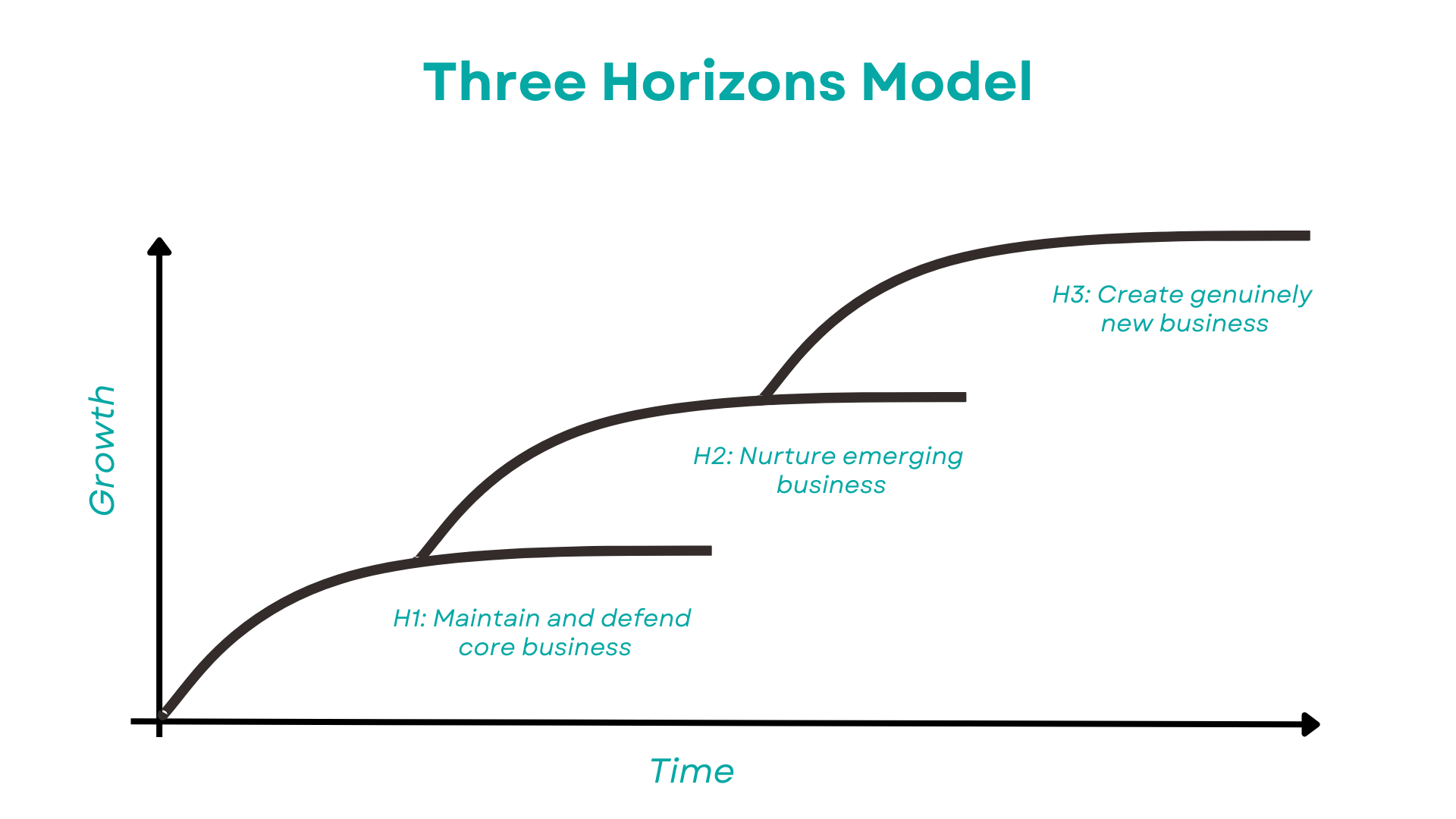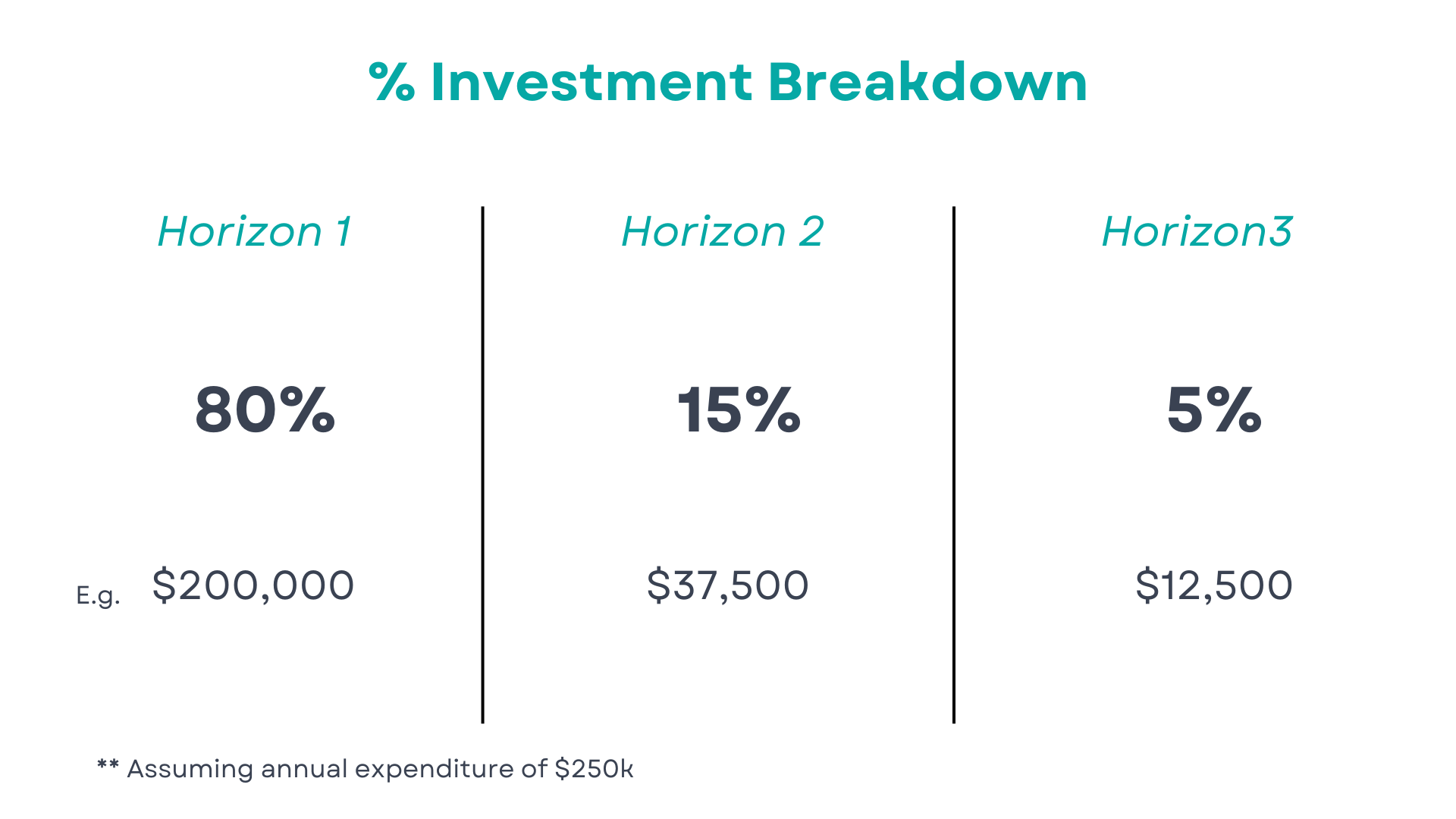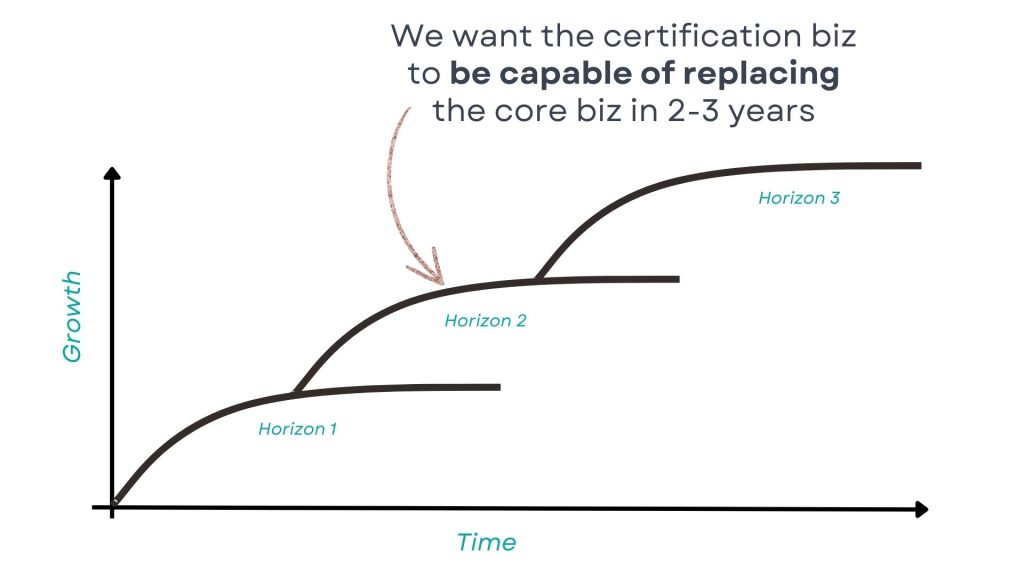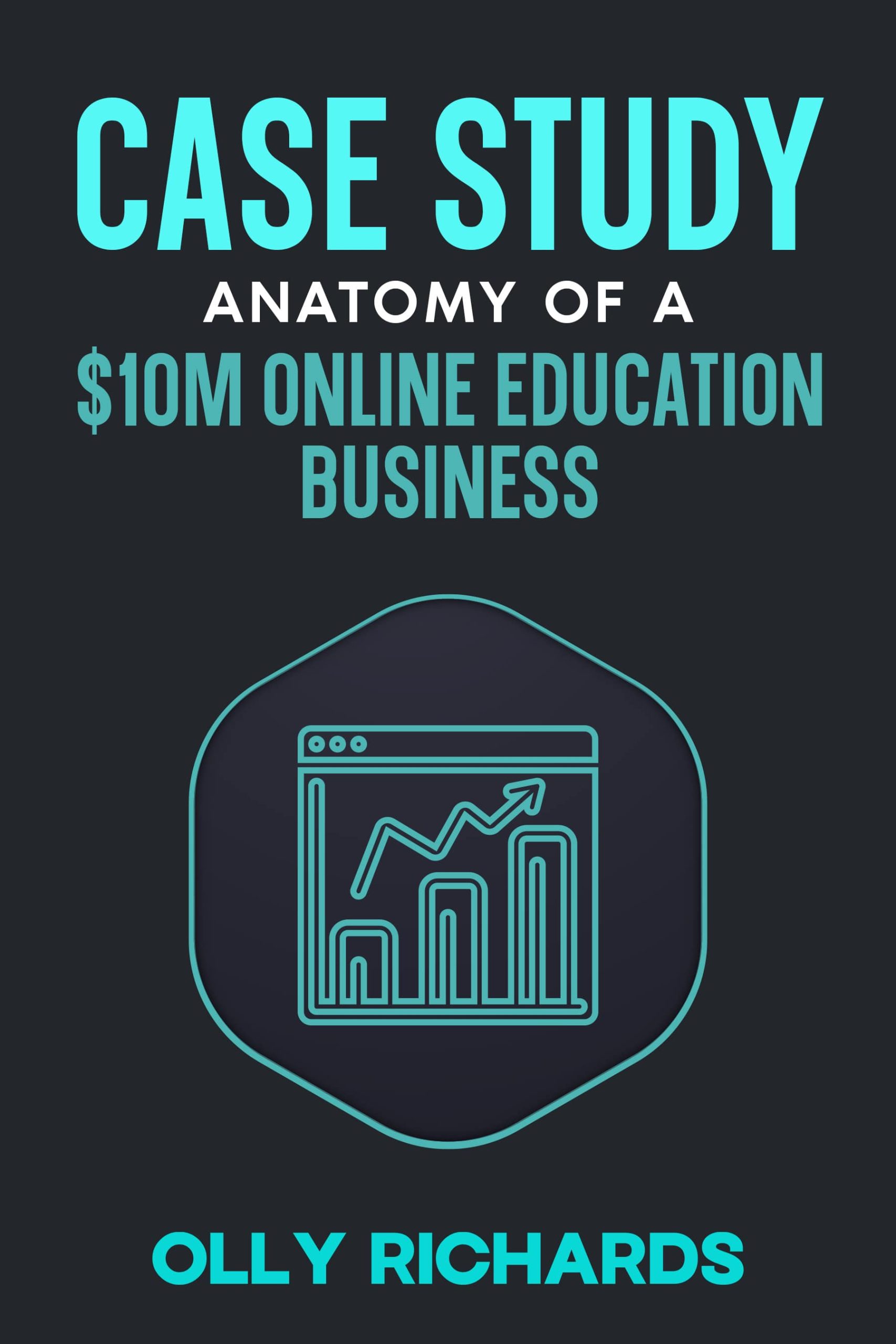This post is about the uncomfortable truth that your business will not survive.
At least not in its current form.
To survive, you have to evolve.
My business, StoryLearning, is coming up on 10 years old this summer…
And the truth is…
We’ve reinvented ourselves more times than Madonna!

The more you study great businesses, the more you realise that all successful companies reinvent themselves.
But evolution isn't an accident.
Evolution is deliberate.
And today, I'm going to show you how I plan for the death and rebirth of my business, along with the exact percentages of expenditure I devote to it.
Change is scary.
But when you have an reinvestment framework to follow, growth gets a whole lot easier…
Heck, you might even enjoy it!
Let's get into it.
Humble Goals vs Silly Ambitions
When I first started blogging in that fateful summer of 2013, my first thought:
It would be great to make a bit of cash on the side.
After a few months, I made my first affiliate sale - a fat $20 commission! I still remember the moment I received that commission email. It was a significant milestone.
Within a year I started to see the possibilities of working online and my goal shifted.
“If I could only make a few grand a month I'd be able to quit my job!”
And then...
Fast-forward to today:
“How many millions in annual profit do I care to make?”
Yes — I’m fully aware of the ridiculousness of this statement. The modest, low-key Brit inside me hates myself for even thinking that.
So, I'll let you into a little secret…
Nothing is forever and change is inevitable.
Whatever you think you want for your business...
There is no “arrival”.
The goalposts always move.
As soon as I realized that enough would never be enough, I understood that everything I was building was temporary.
A snapshot in time.
I realized the need for change.
But I didn't quite have the mental tools to process it.
I knew that there had to be some balance between investing to grow the business today, versus investing in the future.
I just didn't understand how to quantify it.
After all, I was finally making enough money to live an independent life. Was I really going to give up a chunk of that for some hypothetical future?
The rest of this newsletter is dedicated to describing a framework for this question.
The Three Horizons Model
You can think of your current business like this:
It begins, it grows, it matures and eventually plateaus.
Think of this as a “horizon” — the lifespan of a business in one single form.

(In the pre-internet days, the horizon of a new business might be 20 years. In the fast-paced world of internet businesses, maybe more like 5-10 years.)
Whatever…
All of your current energies go into building this business horizon. If you’re new to the game, this first horizon is all you know.
But as we know, change is inevitable.
Eventually, your current business will decline, and evolution will lead you to a new product, service or entirely different business.
(Or you bury your head in the sand, and it dies an undignified death. Also possible.)
What will that new, future business look like? You don’t know. To find out, you need to nurture various possible futures.
One near.
One far.
This leads us to a model known as the “Three Horizons of Growth”:

The Three Horizons model is a tool for thinking about the future growth of your business.
You can use it to plan and coordinate your future strategies in an organised way.
Horizon 1 - This is for dealing with your current business. Here, you have short-term, tangible growth projects that you'd expect to see in this year's annual plan. (6-12 months)
Horizon 2 - This is for nurturing emerging business that evolve naturally from your core business. (1-3 years)
Horizon 3 - This is for long-term innovation projects that may be a wholesale departure from what your business looks like today. (3-5 years)
(I'll give specific examples from my business later.)
This was a model born at consultants McKinsey, following research into the evolution of successful companies.
They discovered that successful companies don't just spend money on today's business. They also invest into a future "pipeline" of growth options.
And then...
When the future arrives (as it inevitably does), you have options.
The Three Horizons model imposes structure on an unknown future.
It gives you a conceptual framework for growth.
This brings order to the chaos:
- Growth takes time, and this framework helps you plan for that
- It gives you and your team a common language to talk about growth
- Helps you allocate budget to growth with confidence
Compare this to how most founders treat growth:
One long string of short-term, reactive "growth hacks", with no real budget or serious attention, only to be dropped like hot potatoes once they fail to "10X your business overnight, bro!"
And I'm guilty as the next man...
In my $10MM Case Study, I wrote about giving up on a new YouTube channel experiment because I didn’t see the "overnight" growth I wanted. This was a big mistake, and it happened because I was being too reactive and failed to leave time for it to be nurtured.
The Three Horizons model ensures that a suitable amount of hard investment goes into the future.
Done properly, it gives you permission to:
Spend real money on long-term growth, without feeling like you’re sacrificing your present business or taking unnecessary risk.
How Much Should I Spend On Growth?
At StoryLearning, we invest into our three horizons with an 80-15-5% breakdown:

80% of our expenditure goes into Horizon 1 - maintaining and growing business as usual.
15% is earmarked for Horizon 2 - the new, the adjacent, the promising.
5% is where we stash the harebrained schemes, the wild gambles, the stuff that might just blow up in our faces.
(That’s Horizon 3, and it’s a nutty as it sounds.)
For example, in dollar terms, assuming annual expenditure of $250k:
- $200k goes into core business (Horizon 1)
- $37,500 goes into H2
- $12,500 goes into H3
What’s that… you want more detail?
I knew you would…
So, Horizon 1 (80%) is what we consider "core business activities".
This stuff isn't designed to uncover a brave new world… simply to manage and grow the current business.
For example…
- New posts on the StoryLearning blog
- New videos on the StoryLearning Spanish YouTube channel.
- Hiring for a new initiative
- Paid campaigns with influencers
- CRO work on a funnel or sales page
This is all in the “here and now”.
Bog-standard growth work.
Our Horizon 2 (15%) is new stuff that we’re actively incubating.
For example, we’re currently building a certification programme for people to learn to teach languages online and build a new career for themselves. This is effectively a new business, and we didn't know if it was going to work, but as you can see, it’s not a million miles away from our core language business.
It's adjacent - a nice “tuck in” to what we do.
Although it’s early stage, it’s already generating six-figures in revenue, and the ambition is for it to be earning $2-3MM within the next three years. So you can bet your bottom dollar we’re investing hard into growing it.
And that’s what Horizon 2 projects are all about:
Anything that sits in Horizon 2 has the potential to replace the core business in the future.
That’s why these projects gets 15% of budget — they matter.

This is important because as your main business declines you want to be able to replace it with something equally substantial.
That's the certification for us.
However…
Usually, these Horizon 2 projects begin life in a much more experimental place…
Horizon 3.
That’s where the real nutty stuff goes down.
Seeds you toss out into the void, hoping for a miracle. You wait, you watch, and maybe - just maybe - a little sprout pushes through the dirt.
Most of them will croak, sure.
But the ones that make it?
Those are the ones you nurture. Give 'em a little love and attention and let them grow. Eventually, some will be proven, and ready to move into Horizon 2, where you take them under your wing and see what they can do with some real budget behind them.
In time, possibly many years down the road, these seeds may grow into huge oak trees themselves, towering over the crumbling remains of your original business.
As you can probably tell, you need to play fast and loose with the ideas in Horizon 3.
You Can’t Predict The Future (Unfortunately)
Here’s the truth:
If you knew what was going to work in advance, you'd already be doing it.
So the idea here is to test hypotheses and watch for evidence of survival in the real world.
You’ll forgive me for not revealing exactly what our 5% projects are (I reveal quite enough already!), but here's an example of what they could be:
- A wireframe or MVP for a StoryLearning app
- a series of pop up schools in London teaching languages to drop in students
- an AI story generating tool for language learning.
(None of which I have any intention of doing, FYI)
You get the idea…
Most of this stuff is crazy and doesn't stand a chance of working…
But the time to be working on new ideas is not is now — far before you need them.
As someone said to me recently:
The crisis is coming sooner or later. It’s up to you whether you want to fix it with 20% of revenue now, or 100% of revenue later.
So…
This is what the 3 Horizons Model is for — a pipeline for future growth.
Practicalities For Implementing 3 Horizons In Your Business
In the example above, I use 80-15-5% as the breakdown between investment horizons.
But, of course, those numbers are arbitrary.
You can (and should) adjust them for your own business model and appetite for risk.
High-growth startups who are likely to pivot would benefit from having a much more aggressive stance, like 70-20-10%.
I think what's important is that you think about the dynamics of your own business and industry…
Or even your own entrepreneurial personality…
And create a framework that feels right to you.
(In reality, with the fast pace of ideation and shipping in the online world, I think you could just as well have Two Horizons rather than three... where a full 20% of budget could go into harebrained scenes. But I like the harmony of three. And so three it is.)
And once you have your framework...
Make sure you actually spend the money!
We do this at the budget level.
I task my CFO with ensuring that we’re actually spending the budget in thew way we set out to.
It’s all too easy to let future ideas sit on a flip chart in a meeting room somewhere without being executed on… especially those in the 5% bucket.
It’s an important part of your entrepreneurial discipline to make sure these ideas get executed
The best way to do this is most likely going to be with team members owning experiments — not you.
What Are Your Horizons Of Growth?
To recap…
Successful business (ones that survive for decades) invest into growth before it’s needed.
You can think of this in terms of Three Horizons:
- Horizon 1: Maintain and defend the core business
- Horizon 2: Nurture emerging business
- Horizon 3: Create genuinely new business
To make these horizons a reality, you can devote today’s budget into incubating these ideas for the future.
Ideas that begin in Horizon 3 (5%) should have the potential to replace the core business in size.
As ideas prove themselves, you can move them up to Horizon 2, where they get more resources (15%).
Eventually, the superstars will move into Horizon 1 and become core business (80%).
Important:
Do you know what your gross annual expenditure is — an exact dollar amount?
I suggest diving into Xero and digging this up.
Then, apply 80-15-5% to this, to get your exact theoretical dollar amounts.
This will be a helpful reality check on how much you could be spending on new stuff.
Good news…
Brainstorming this stuff is legit super fun.
You’ll never have more fun with a pen and paper than brainstorming ideals for Horizon 3.
Of course, ideas are cheap.
The tricky part is actually executing on it all.
But you’ve got this.
I know you do.
You’re smart as f***.
You’re on my newsletter after all 😉
Namaste,
Olly
CASE STUDY: Blueprint Of A $10m Online Education Business:
Join my free newsletter for online educators and I'll send you the case study immediately...
We will protect your data in accordance with our data policy!

